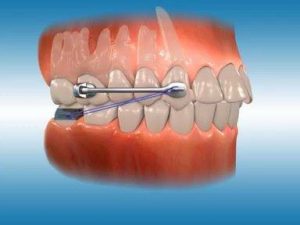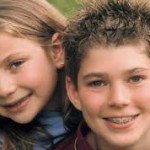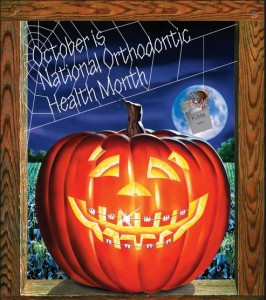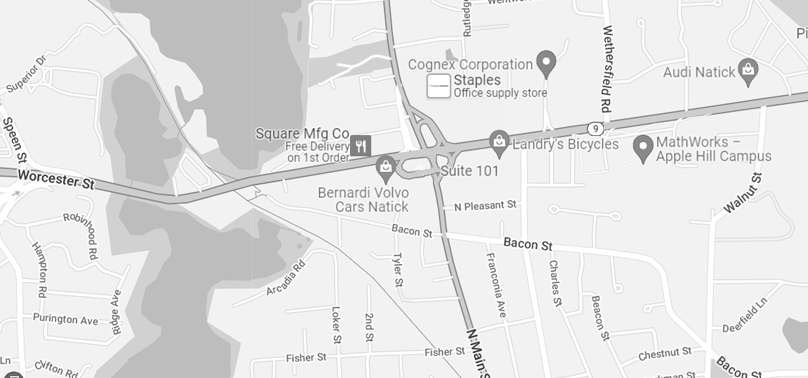October 2nd, 2017
Lakewood Park Orthodontics is excited to now be using the Carriere Motion Appliance for our Class II orthodontic cases! The Carriere appliance can shorten treatment time and reduce the amount of time spent in wires and brackets. The appliance is barely visible and there is even a clear option for those who would like an even more concealed look.
A class II malocclusion is a very common bite that we see among our patients. With a Class II bite the upper teeth are forward of the lower teeth. This causes an ‘overbite’. We usually treat Class II malocclusions with elastics (sometimes a headgear is also needed at a young age if the malocclusion is significant). Elastics are typically used to fix the bite at the end of treatment. But sometimes patients are ‘burnt out’ by the end of treatment, they are not enthusiastic and therefore their compliance is not up to par. Unfortunately, elastics are only effective if the patient is compliant. With the Carriere appliance, we are able to use the elastics in the beginning of treatment -before the braces even go on. Fixing the malocclusion in the beginning of treatment, when the patient is most compliant, can reduce total treatment time. Plus, it reduces the amount of time spent in wires and brackets making treatment easier on the patients.

April 26th, 2016
One of the first things Dr. Hughes will look for during a consultation of a teenager/pre-teen is the presence of primary (baby) teeth. If a thirteen year old still has baby teeth it may mean that the dental development is delayed or it could mean that something is not right. The 12-year-molars are a good indicator as to what exactly is going on. If the 12-year-molars have not erupted, chances are that development is just behind schedule. Another indicator is whether or not teeth are being lost in the appropriate sequence. If they are, it is likely that things are just delayed. However, if for example, one primary second molar remains and it isn’t loose and all of the others are gone with their replacements in, it may indicate an issue and warrant investigation.
In some cases the patient would benefit from having the primary teeth extracted and starting braces. There are several factors to consider when determining if the patient would benefit from extractions of baby teeth. The first is the patient’s age. If the patient is 14 or 15, Dr. Hughes will usually recommend having the baby teeth removed and starting braces in order to have the treatment finished before they graduate from high school. The formation of the roots of the un-erupted permanent teeth are considered. If the roots are 2/3 formed and the associated baby teeth are not loose, extractions are recommended. Another factor is the status of the 12-year-molars. If the 12-year-molars are erupted and baby teeth remain, Dr. Hughes will usually recommend extracting the primary teeth and starting the braces.

In general, starting treatment after all of the primary teeth are gone minimizes treatment time and reduces the chance of any negative effects of orthodontic treatment such as white spot lesions, puffy gums and root resorption. But there are some situations that would warrant starting braces when the patient still has baby teeth. For example, if a tooth has become impacted because there is not enough room for it to come in, we may make room for the underlying tooth with hopes that the baby tooth will become loose on its own. If it does not, we would then have the baby tooth removed by the patient’s dentist. Certain malocclusions may also benefit from starting treatment before all the baby teeth are gone. For example, in underbite cases we often start treatment before the lower baby molars are gone. Also, in large overbite cases it is ideal to start before the upper baby molars are lost. Also, if we are keeping a baby tooth because its underlying permanent tooth is missing, the remaining baby tooth will have no impact on when the braces should be started.
Many times we are told that patients had postponed their initial consultation because of the presence of baby teeth. In many cases this is OK. However, we do recommend coming in for a consultation even if there are some primary teeth left (especially if they have been hanging around for a while) in case one of the factors mentioned above are present.
October 6th, 2015
Have you heard of this dangerous trend? http://www.seventeen.com/health/news/a33177/why-this-diy-braces-trend-is-seriously-so-dangerous/
Leave the braces up to a professional for a beautiful AND healthy smile. An orthodontist is a specialist who has two to three years of additional education, and is an expert in straightening your teeth and choosing the treatment option that's best for you.

July 17th, 2012
We want to congratulate Niamh who was our refer-a-friend contest winner! She received an iPod Touch- Enjoy!
November 1st, 2011
Thank you for taking the time to visit our blog. Please check back often for weekly updates on fun and exciting events happening at our office, important and interesting information about orthodontics and the dental industry, and the latest news about our practice.
Feel free to leave a comment or question for our doctor and staff – we hope this will be a valuable resource for our patients, their families, and friends!




